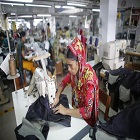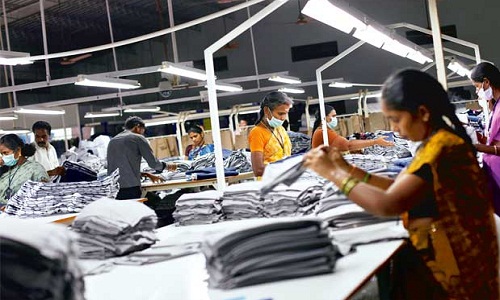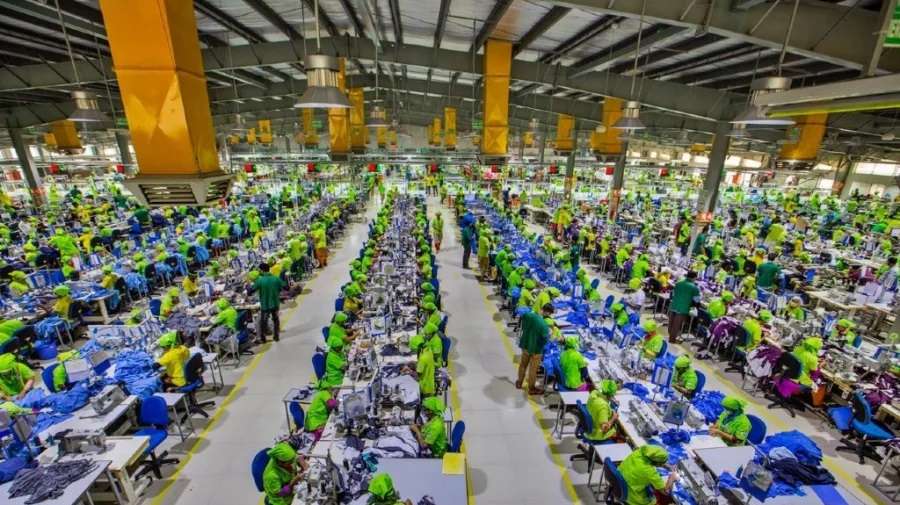"Bangladesh has emerged an attractive destination for Indian RMG manufacturers. Many have set up units in the country simply because Bangladesh offers ease of doing business, importing-exporting is faster. R&D on new styles is faster as you can import fabrics in three days where as in India, it would take 10 days. In fact, the list of Indian companies setting up garment units in Bangladesh is long."

Bangladesh has emerged an attractive destination for Indian RMG manufacturers. Many have set up units in the country simply because Bangladesh offers ease of doing business, importing-exporting is faster. R&D on new styles is faster as you can import fabrics in three days where as in India, it would take 10 days. In fact, the list of Indian companies setting up garment units in Bangladesh is long.
Indian RMG exporters set up units in Bangladesh
Gurgaon-based and BSE-listed Pearl Global Industries set up a garment manufacturing unit in Bangladesh 12 years back. The company, which has 4,000 machines across four factories in the neighbouring country, is planning to double its capacity in the next three years. Chennai-based Ambattur Clothing has two units in Bangladesh which employ 8,000 people. It supplies clothes to brands such as Zara, Gap and Taylor. While the units in Bangladesh account for 60 per cent of the company's business, Chennai accounts for only 15 per cent.

So far, Orient Craft, a Delhi-based garment exporter which employs 32,000 people, stayed away from Bangladesh. Now, even Orient Craft is thinking of setting up a unit in Bangladesh. Say Indian exporters, as India's garment exports stagnate at $17 billion a year, Bangladesh's apparel exports are growing at double digits and are likely to touch $27 billion this year. India's garment exports were $15.49 billion between April and February 2015-16, up only 1.5 per cent over the corresponding period last year.
Bangladesh clocked $18.12 billion in apparel exports between July 2015 and February 2016, growing by 9.52 per cent over the corresponding period last year. For the past four months, its exports have been between $2.2 billion and $2.6 billion per month. The country overtook India in 2008 and its share of world trade began to climb from 2010 (4.19 per cent vs India's 3.16 per cent). Interestingly, India's share of the world trade in garments increased from 3 per cent in 2000 to 3.78 per cent in 2010. In 2014, India's share was 3.67 per cent while Bangladesh's share was 5.09 per cent, according to WTO data on clothing exports as of October 2015.
According to Sudhir Dhingra, Founder & Chairman, Orient Craft, the Indian government is not willing to do much (like bilateral trade deals with EU and others to drive competitiveness). “If we can't beat them, join them.” Vijay Mathur, Additional Secretary General, Apparel Export Promotion Council, points out exporters are shifting to Bangladesh as buyers want it that way. Bangladesh offers ease of doing business, importing-exporting is faster. R&D on new styles is faster as you can import fabrics in three days. In India, it would take 10 days. The more samples and styles you produce, the better the chances you stand to get an order. More than Indian exporters, it is Indian business families based in Sri Lanka and Hong Kong who have made the most of Bangladesh. These include Hong Kong-based groups like Must Garments, Epic Garments and Sri Lanka-based groups like Brandix, MAS Holdings and Hydramani Groups.
Advantage for Bangladesh exports
Bangladesh’s biggest advantage is duty-free exports to markets like the European Union, Japan, Australia and Canada under a preferential tariff system called Generalised System of Preferences (GSP), which provides an exemption from the more general rules of the WTO. Garment exports from India to Europe attract an import duty of 11-12 per cent.
Moreover, labour cost in Bangladesh is 25 per cent lower than India. A skilled worker in India, with two-hours of overtime, costs $200-$225 a month, while a similar worker in Bangladesh is available for $140-150 a month. Bangladesh’s labour is not just cheap, but also highly skilled - garment exports account for 82 per cent of Bangladesh's total exports.
In the past, power cost was 50 per cent lower than India due to abundance of gas, but that difference has come down. There's still some difference as boilers, generators and vehicles run on gas. Oil has come down to $40/barrel, but in India government is still increasing fuel prices, says an Indian exporter.
It's all about focus. In India, when you have consecutive holidays, like this week, the customs is closed. In Bangladesh, it is open 24x7 throughout the year. Even if you have strikes, vehicles ferrying garments enjoy exemptions, according to Dhingra. Also, provident fund or medical cover for workers is not statutory in Bangladesh. Working conditions are also poorer than India. A recent study by US brands found that only 24 of the 700 factories inspected met international safety standards.
Loss of opportunity for India
Owing to the duty disadvantage and higher costs, India became uncompetitive. It has vacated the mass-market for garments (shirts, trousers) and now largely plays in the fashion segment for value-added garments, like embroidery or in garments which need a lot of handwork, or premium garments that cost upwards of $15. Growth in garment industry can add a lot of jobs but exporters feel the government is oblivious to the opportunity.
One way to drive competitiveness is to go for bilateral agreements with key countries, seeking duty-free exports.
According to Dhingra, a bilateral agreement with European Union, which links foreign investment from EU to duty-free exports of garments from India, can grow exports to Europe 3-4 times to $24 billion-$26 billion in three years, from $9 billion today.












